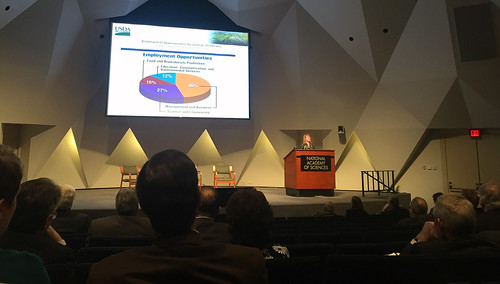
Nearly 99% of farms in the United States are family operated, and they account for roughly 90% of agricultural production. With statistics like these, it’s not surprising that many people associate jobs in agriculture with small-town America, farmers and tractors, and corn fields and cattle.
While the importance of farmers cannot be overstated, the diversity of careers available in the agricultural sector is staggering and often underappreciated. According to a 2013 study funded by USDA’s National Institute of Food and Agriculture (NIFA), an average of 57,900 jobs will open every year from 2015 to 2020 and require a bachelor’s degree or higher in food, agriculture, natural resources, or environmental studies. These jobs will include a range of sectors, including management and business; science, technology, engineering, and mathematics (STEM); food and biomaterials production; and education, communication, and government services. Strikingly, it is also expected that 39% of positions will go unfilled.
Numbers like these have many people in the agricultural sector scratching their heads in confusion. How can we attract young people into agricultural jobs?
To recruit, educate, and retain the next generation of agricultural professionals, USDA supports numerous educational programs, a few of which include: curricula development for K-12 classrooms; grants to educate young farmers and ranchers; pre- and post-doctoral fellowships that support young scientists; and scholarships dedicated to improving diversity within the agricultural workforce. In addition to these efforts, USDA recognizes that in order to attract young people into careers in agriculture, the stakeholder community must come together to discuss how we communicate about jobs in agriculture.
To initiate this conversation, the National Academy of Sciences (NAS) recently hosted a two-day Workshop that brought together stakeholders from universities, government, non-government organizations, and the private sector to discuss growing needs in the agricultural workforce. During the meeting, sponsored in part by NIFA, participants brainstormed new ways to excite students about agriculture throughout all levels of education and discussed the needs for novel curricula that provide students with transferrable, high-tech skillsets. By supporting these discussions and others, USDA continues to identify ways to communicate with students that their interests in computer science, big data analysis, drone technologies, genomics, molecular biology, economics, international trade, and others, are perfectly aligned with the needs of the future agricultural workforce.



